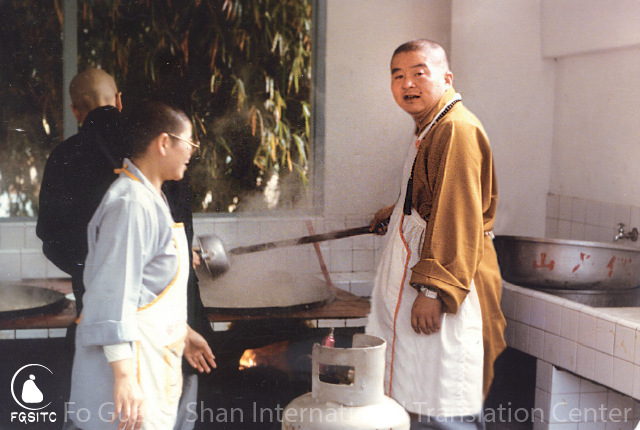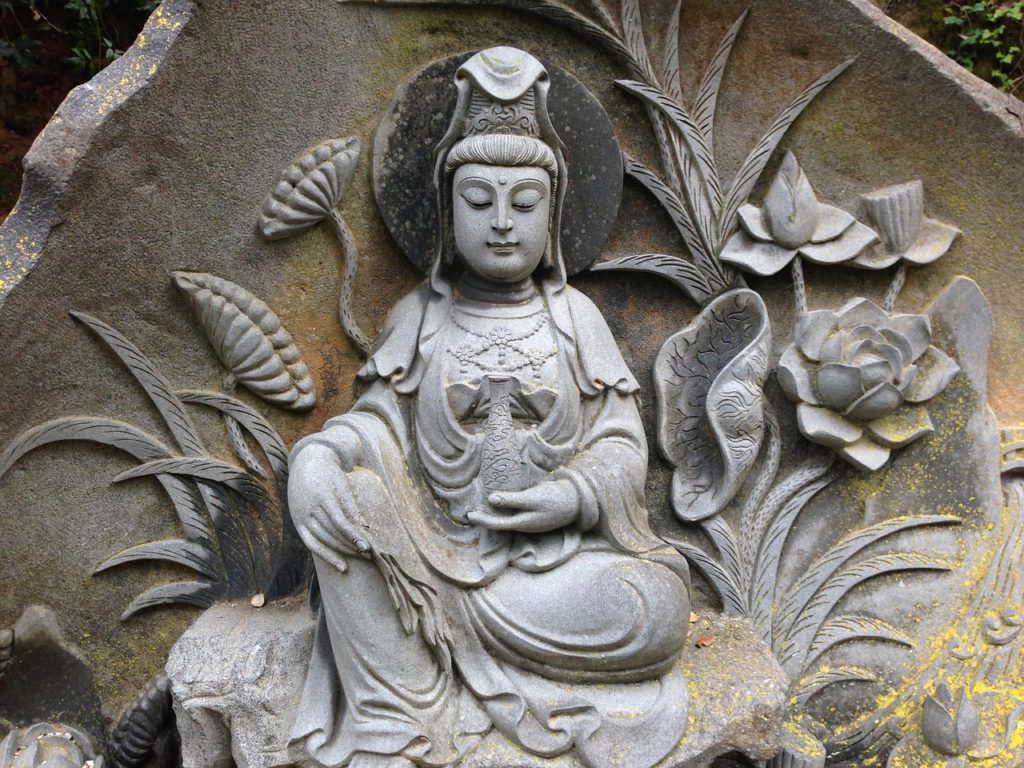Recent Articles
Also referred to as the “thirty-two major marks” and “marks of a great man,” these are the characteristics of excellence adorning Buddhas and wheel-turning monarchs. Read more
Many different sutras contain descriptions of the thirty-two marks and eighty characteristics, each with slight variations: Top of his head not visible to others. A prominent nose with well-concealed nostrils. Eyebrows shaped like a new moon. Large, round ears that are long and thick. A strong body. Closely-fit bones. When he turns, his whole body turns, just like a majestic elephant. Read more
It is my hope that our Buddhist monks will all become monks who give support in all directions and not become monks who live off all directions. Whoever it may be, the monastic followers or the lay disciples, although we have not yet attained enlightenment, we can still broadly make affinities with others first, so as to become aspiring bodhisattvas who will ensure that “Buddhism Read more
It is enough for most monks to only have the ability to chant and teach the Dharma, and of course I too can chant sutras and teach the Dharma. But only being this kind of monk was not something I was willing to do. I wanted to become a monk who was able to engage in propagating the Dharma in a multifaceted way: There is Read more
At the many places I engaged in practice and study—at places such as Qixia in Nanjing, Jinshan and Jiaoshan in Zhenjiang, and Tianning in Changzhou, where I was brought up experiencing spring breezes, summer rains, autumn frosts, and winter snows—I studied silently and grew up quietly. I was always thinking as to how I could repay Buddhism’s kindness. I could not make a living by depending on Buddhism over Read more
The Avatamsaka Sutra says, 'The mind controls everything.' In order to properly control body and speech, we must come to understand our minds. If we can control our minds, we can do anything.Master Xingkong (780-862) wrote a wonderful passage that expresses this point very well. He said, "The practice of Buddhism can be compared to presiding over a walled city; during the day, thieves and Read more
One of the great advantages of sitting meditation is that you can take it with you wherever you go. Whether you are in a forest deep in the mountains or beside a stream among the grass and reeds, you can develop meditative concentration just by sitting down and crossing your legs.But what is meditation? Does it come from sitting, standing, or lying down? Huineng, the Read more
Dharma is for people. There is one thing about the Dharma that I am completely sure of: the Dharma is for people. The Buddha’s teachings are not a cold philosophy designed merely to rearrange the concepts in our minds, they are a living act of compassion intended to show us how to open our hearts. I learned this truth just as everyone must learn it—by Read more
While the Four Noble Truths explain the phenomena of the universe, the Buddha expounded on them mainly as a guide for life. It is inadequate, however, to merely learn the Four Noble Truths. We must resolve, cultivate and practice accordingly. We must end the causes of suffering, practice the path, and reach the cessation of suffering in order to achieve liberation. Consequently, the Four Universal Read more
True stature is not created by form or ornament; words spoken out of jealousy and greed oppose it. Only when evil has been stopped at its roots, and when there is wisdom without anger is there true stature.— Dharmapadavadana Sutra The False Stature of This WorldEveryone wants to be well regarded by others. However, in seeking true stature, people too often waste their time in Read more
It is only through loving-kindness and compassion that we can find room in our hearts to forgive others. It is only through our willingness to let go of resentment that we can find a way to magnanimity. Read more
The Buddhist precepts are here to protect us from wrongdoing, lead us away from what is bad, and towards what is good. Vinaya Master Daoxuan of the Tang dynasty composed the Simplified and Amended Handbook of the Four-Part Vinaya [Sifenlü Shanfan Buque Xingshi Chao], in which he analyzed the precepts in terms of their “rules,” “essence,” “practice,” and “characteristics.” When one puts the actual rules Read more
© 2024 Fo Guang Shan International Translation Center
Protected by copyright under the terms of the International Copyright Union; all rights reserved.


















